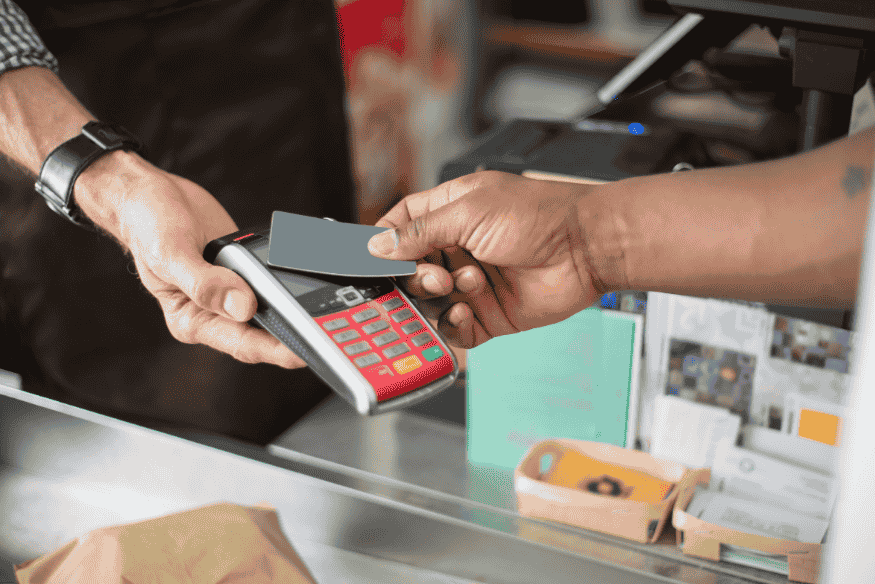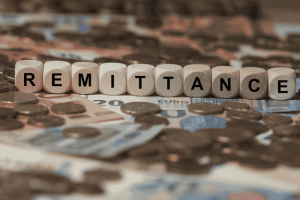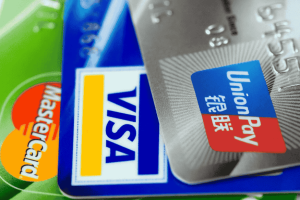The rapid evolution of digital payments in Asia has redefined how consumers manage their finances. Among the most notable trends is the rise of BNPL cards, or Buy Now, Pay Later cards, which offer short-term installment payment options as an alternative to traditional credit cards. With the increasing popularity of fintech platforms and digital wallets, BNPL cards are challenging credit cards for dominance in Asia’s fast-changing consumer finance landscape.
Unlike traditional credit cards that charge interest on unpaid balances, BNPL solutions typically allow users to split purchases into equal installments over weeks or months—often without interest if payments are made on time. This model has proven especially popular among younger consumers, freelancers, and online shoppers who value flexibility and transparency over complex interest structures.
Major Asian markets like Singapore, India, Malaysia, and Indonesia have seen explosive BNPL adoption through platforms such as Atome, Grab PayLater, Lazada’s SPayLater, and Pine Labs. These fintech providers are also introducing BNPL cards—physical or virtual cards that can be used wherever Visa or Mastercard is accepted—bridging the gap between digital and traditional payment systems.
This article explores the similarities and differences between BNPL cards and credit cards in Asia, examining their benefits, limitations, regulatory developments, and the types of consumers each model suits best. As Asia’s digital economy expands, understanding how these tools fit your financial lifestyle is essential for making smarter spending and borrowing decisions.
Understanding BNPL Cards and How They Work

BNPL (Buy Now, Pay Later) cards are a relatively new payment innovation designed for the digital-first consumer. Unlike conventional credit cards that offer revolving credit, BNPL cards allow users to make purchases and pay over a fixed number of interest-free installments. The entire process is managed through an app or integrated digital platform.
When users pay with a BNPL card—either online or in-store—the transaction is automatically divided into manageable payments. For example, a $300 purchase may be split into three $100 payments made every two weeks. The appeal lies in simplicity: no hidden interest, no complex billing cycles, and transparent terms.
In Asia, BNPL cards are typically issued through partnerships between fintech companies and financial institutions. Popular examples include Grab PayLater Card (Singapore), Atome Card (Malaysia), and Pine Labs OneCard (India).
These cards often come with real-time approval, no annual fees, and easy integration with mobile wallets. Their accessibility makes them especially attractive to younger consumers or individuals with limited credit histories, offering a bridge to formal financial systems without traditional credit card barriers.
The Evolution of Credit Cards in Asia
Credit cards have long been a cornerstone of modern finance in Asia, enabling consumers to manage cash flow and earn rewards. Over the past two decades, their appeal has grown across both developed and emerging Asian economies. In Japan and Singapore, high-income consumers rely on cards for convenience and travel benefits. Meanwhile, in markets like India, Indonesia, and the Philippines, rapid digitization and e-commerce growth have driven new cardholder adoption.
Today’s credit cards are far more than payment tools—they serve as lifestyle enablers. Banks partner with retailers, airlines, and super-apps to offer cashback, loyalty points, and travel privileges. Contactless payments, mobile integration, and security features like tokenization have made credit cards more seamless and secure than ever.
However, the rise of BNPL cards in Asia challenges traditional credit models. Younger generations, wary of debt and seeking transparency, prefer fixed-term payment solutions over revolving credit. As a result, banks are rethinking their strategies—some even launching hybrid products that combine BNPL flexibility with traditional credit benefits.
The credit card’s future in Asia will likely depend on its ability to adapt, offering digital-first features and personalized rewards to remain relevant in a changing financial ecosystem.
Comparing BNPL Cards and Credit Cards
While both BNPL cards and credit cards offer convenient payment options, their structures and purposes differ significantly.
| Feature | BNPL Cards | Credit Cards |
|---|---|---|
| Payment Model | Fixed installments, usually interest-free | Revolving credit with monthly interest |
| Approval | Faster, minimal credit checks | Requires income verification and credit score |
| Fees | Typically no annual fees | Annual fees, late payment charges |
| Rewards | Limited or platform-specific perks | Cashback, miles, or points |
| User Base | Younger, first-time borrowers | Established credit users |
BNPL cards provide simplicity and financial transparency, ideal for small-ticket purchases or short-term budgeting. Credit cards, on the other hand, offer higher credit limits, global acceptance, and comprehensive rewards programs—making them better suited for frequent travelers or business users.
Ultimately, the right choice depends on your spending habits: if you value structure and control, BNPL cards may fit better; if you prioritize flexibility and benefits, credit cards remain advantageous.
The Role of Fintech in Driving BNPL Adoption
Fintech innovation is the driving force behind the BNPL cards Asia movement. Platforms like Atome, Grab PayLater, and Kredivo are leveraging technology to offer real-time approvals, automated payments, and data-driven credit assessment models. These advancements enable faster, more inclusive access to credit-like products without traditional banking bureaucracy.
Fintechs analyze user behavior—such as spending patterns, payment history, and digital wallet activity—to determine creditworthiness. This approach allows individuals without formal credit scores, especially in emerging Asian markets, to participate in the financial system.
Moreover, BNPL providers partner with e-commerce platforms, retailers, and even travel apps to embed payment solutions directly into the checkout experience. This integration streamlines the consumer journey and encourages repeat transactions.
Banks are taking note: many now collaborate with fintech companies to co-launch BNPL solutions or integrate short-term installment options into existing credit card systems. This synergy marks a new era of digital finance in Asia—where accessibility, user experience, and data intelligence redefine the meaning of credit.
Benefits of BNPL Cards for Asian Consumers
BNPL cards have rapidly gained popularity because they align with modern consumers’ preferences for control, simplicity, and transparency. The main benefits include:

- No Interest or Hidden Fees: As long as payments are made on time, users avoid costly interest charges.
- Instant Approval: Simplified onboarding with minimal documentation.
- Budget Management: Fixed installment plans encourage responsible spending.
- Accessibility: Ideal for consumers without credit histories or those hesitant about traditional credit.
- Integration with Digital Ecosystems: Seamless use across online and offline platforms.
In regions like Southeast Asia, where youth populations are digitally active but financially cautious, BNPL cards have become a preferred alternative to credit cards. They empower consumers to make essential purchases while maintaining better control over debt.
However, consistent on-time payments are crucial. Late or missed installments can incur penalties or damage credit profiles if reported to financial bureaus.
Drawbacks and Risks of BNPL Cards
Despite their advantages, BNPL cards come with inherent risks. The ease of installment-based payments can lead to overspending—a growing concern among younger users. Without interest to deter large purchases, some consumers accumulate multiple BNPL obligations across platforms.
Another issue is lack of regulation. In several Asian countries, BNPL providers operate under limited oversight, creating inconsistencies in consumer protection standards. Disputes over late fees, refunds, or unauthorized charges can be harder to resolve than with regulated credit cards.
Furthermore, while fintech-driven risk assessments increase access, they also rely on user data, raising privacy concerns. The absence of clear reporting to credit bureaus may also prevent users from building long-term credit histories.
As the BNPL industry matures, regulators across Asia are developing frameworks to address these issues—ensuring transparency, data protection, and responsible lending practices.
Regional Insights: BNPL Trends Across Asia
BNPL adoption in Asia varies widely by country.
- Singapore and Malaysia: High smartphone penetration and fintech-friendly regulations have fueled mainstream BNPL use. Grab PayLater and Atome dominate the market.
- India: Rapid e-commerce expansion and youthful demographics drive platforms like Pine Labs and Simpl. Regulatory reforms are ongoing.
- Indonesia and Vietnam: BNPL fills credit gaps for unbanked populations, supporting retail and SME growth.
- China: While traditional BNPL models are restricted, Alipay’s Huabei and JD.com’s Baitiao operate under similar installment structures.
Each market reflects distinct consumer needs. In Southeast Asia, affordability and flexibility drive adoption. In developed economies, BNPL competes with credit cards as a lifestyle choice. Across the board, digital integration and localized payment partnerships underpin BNPL’s growing success.
The Future of Credit Cards in a BNPL World
Credit cards are not disappearing—they’re evolving. Many banks are adapting to BNPL trends by integrating installment features directly into their cards. For example, DBS and Citi now offer post-purchase installment options through mobile apps.
In the future, expect to see hybrid cards combining traditional credit with BNPL flexibility. Users might toggle between revolving credit or fixed installments depending on spending type.
Moreover, rewards programs will likely become more personalized, leveraging AI and user data to compete with fintech platforms’ real-time engagement. The line between BNPL and credit cards will continue to blur as both industries innovate toward convenience and customer-centric design.
Regulatory Developments and Consumer Protection
Regulators across Asia are beginning to address the fast growth of BNPL services. The Monetary Authority of Singapore (MAS) and the Reserve Bank of India (RBI) have introduced frameworks emphasizing affordability checks, disclosure standards, and dispute resolution mechanisms.
These measures aim to prevent over-indebtedness and protect users from predatory lending practices. Transparency on fees and clear communication about repayment terms are becoming mandatory in many markets.
Stronger consumer protection will enhance industry credibility, encouraging responsible borrowing while supporting long-term financial inclusion. For BNPL to remain sustainable, balance between innovation and regulation is essential.
The Role of Consumer Behavior and Cultural Influence
Consumer behavior across Asia plays a vital role in shaping the adoption of BNPL cards Asia. The region’s diversity—from tech-savvy Singapore to rapidly digitizing India and Indonesia—creates unique spending habits and financial attitudes that influence how people use credit. Younger consumers, in particular, are driving the BNPL boom. They value instant access, transparency, and flexibility over traditional credit lines that often feel restrictive or intimidating.
Cultural attitudes toward debt also differ across Asia. In many East and Southeast Asian societies, people are generally cautious about borrowing, preferring short-term or interest-free credit arrangements. BNPL cards fit this mindset perfectly, allowing consumers to manage cash flow without feeling trapped in long-term debt cycles.
Meanwhile, in emerging markets, BNPL cards bridge the financial gap for those previously excluded from credit systems. They enable affordable access to essential goods, education, and technology while promoting a gradual shift toward formal financial participation.
Moreover, social media and digital marketing heavily influence BNPL adoption. Fintech platforms use lifestyle-driven campaigns and influencer endorsements to appeal to younger audiences. This emotional connection—combined with financial convenience—has made BNPL not just a payment method but a cultural trend that reflects Asia’s modern, mobile-first consumer identity.
Choosing Between BNPL Cards and Credit Cards
Selecting the right payment tool depends on personal habits and financial goals.
Choose BNPL cards if you:
- Prefer short-term installment payments.
- Want interest-free options for smaller purchases.
- Are new to credit or lack a traditional credit score.
Choose credit cards if you:
- Desire flexible repayment timelines and global acceptance.
- Prioritize travel rewards, cashback, and loyalty programs.
- Have disciplined payment habits and can manage revolving credit responsibly.

Many consumers in Asia use both. Pairing a credit card for large expenses and a BNPL card for daily essentials can create a balanced, manageable spending strategy.
Conclusion
The rise of BNPL cards in Asia signals a profound shift in how people view credit and consumption. These products empower consumers with transparency, flexibility, and accessibility, while challenging traditional banks to innovate faster.
Yet, the two systems—BNPL and credit cards—need not compete. Instead, they complement each other, serving different financial needs across Asia’s diverse markets. Responsible usage, regulatory oversight, and consumer education will determine their long-term success.
As Asia continues to lead in fintech innovation, the future of personal finance will revolve around choice and customization. Whether you embrace BNPL’s simplicity or credit cards’ versatility, the ultimate goal remains the same: smarter, sustainable financial management in a connected, digital world.









